Intel Z77 Motherboard Review with Ivy Bridge - ASRock, ASUS, Gigabyte, and MSI
by Ian Cutress on May 7, 2012 7:40 PM EST- Posted in
- Motherboards
- MSI
- Gigabyte
- ASRock
- Asus
- Ivy Bridge
- Z77
ASRock Z77 Extreme4 – BIOS
The ASRock graphical BIOS has evolved from the initial days of Sandy Bridge into a bright blue screen with options we see below. With a graphical BIOS, there are two things to focus on – presentation and usability. Not by any great stretch of the imagination, one could design a great BIOS for everyone to use – with an infinite color palette and tools it could look amazing. However implementing such a system could be tricky, as a BIOS is currently limited to approximately eight megabytes in size. This has to contain all the initialization parameters for the board, as well as all the BIOS options we get to play with. I can imagine that should that limit ever increase to 16 or 64 MB, we would have a lot nicer things to look at.
I could wax lyrical about what I want in a BIOS, but as it currently stands, we will never get a work of art or functional awesomeness. ASRock make a fair attempt, one of the better ones in fact, and it turns out to be easy to use.
The main screen shows the BIOS version, CPU, memory and frequencies. What would put the cherry on the top would be the CPU voltage and temperatures as well. If there is room, perhaps some fan speeds (similar to ASUS’ EZ mode) should also be included. The main screen also has a system browser element, which is a top down view of the board with details on what is plugged in.
Overclocking options are essentially all bunched in one list in the OC Tweaker menu:
Important options like the CPU multiplier and BCLK are plain to see, as well as voltages and load line calibrations. The ASRock BIOS had no issues in applying the XMP settings on my G.Skill DDR2-2400 kit of memory.
The Internet Flash utility is something new to consumer level BIOSes – ASRock implements this in their Advanced Menu. If your motherboard is linked via Ethernet to the internet (thus on a network, or via ICS), then it will probe the ASRock servers for the latest BIOS. It will then be downloaded and applied without hassle. I really like this feature – it makes my life a lot easier at least!
Fan settings are all controlled in the H/W Monitor screen. This shows temperatures, voltages and fan speeds, and gives options for the various fan headers on-board. The main issue I have with ASRock fan options is the fact that they are not clear. We should have all our options regarding temperatures and target temperatures – instead we get a ‘Level’ system. This means that ASRock should probably invest in better fan controllers so they can talk back to the system regarding RPM, temperatures and relating these all to sensors on-board.
Software
ASRock’s software has not changed in any major detail since their last outing on X79. At the heart of the system is ASRock eXtreme Tuning Utility (AXTU), which controls OS overclocking, fan controls, energy saving and XFast RAM. XFast RAM itself allows 32-bit OS users to unlock memory not found, or 64-bit users to enable a RAMDisk to speed up certain caching utilities in the operating system.
Also from ASRock is the XFast LAN software, which in fact is a licensed version of cFosSpeed with ASRock decals. This software allows full management of the network facilities on the motherboard – shaping traffic for different functions as well as monitoring tools amongst others.
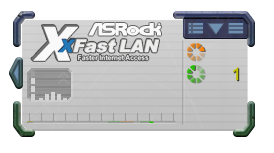
XFast USB is another of ASRock’s licensed software bundled with each motherboard. This utility will change the driver from the standard Windows one to one that can implement BOT (Bulk-Only Transfer) protocols. In reality, this allows for quicker transfers due to less overhead, at the expense of latency. For bulk transfers, I find that this utility works really well, especially with incompressible transfers. The downside being that it is only applied to one USB port at a time.
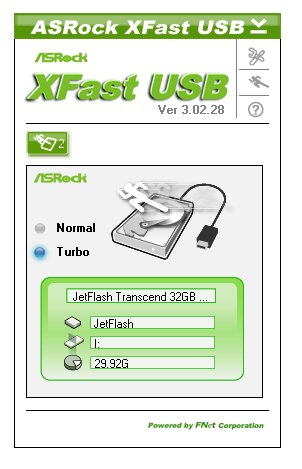


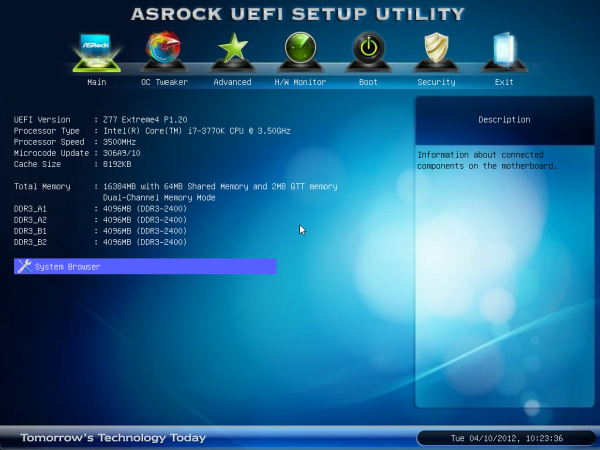
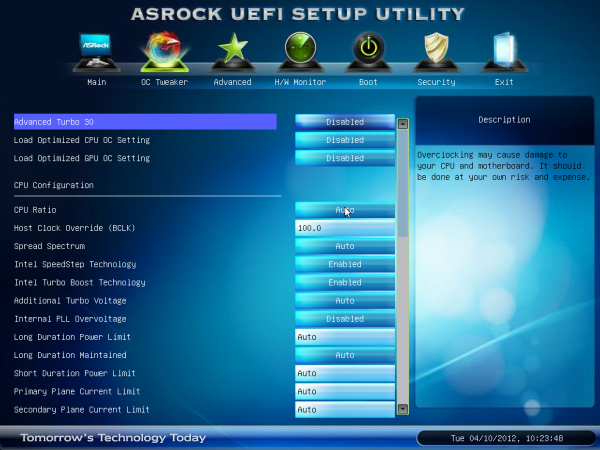
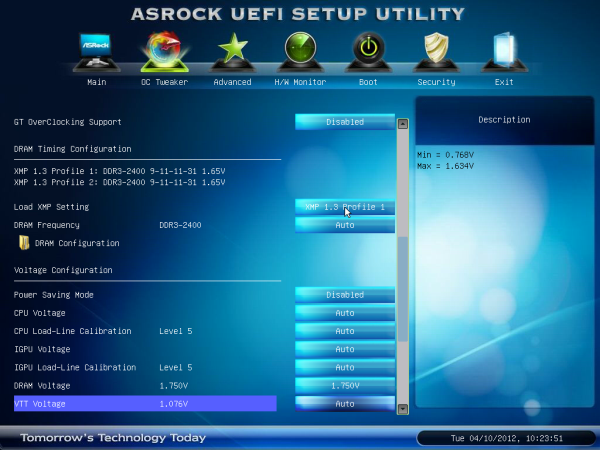

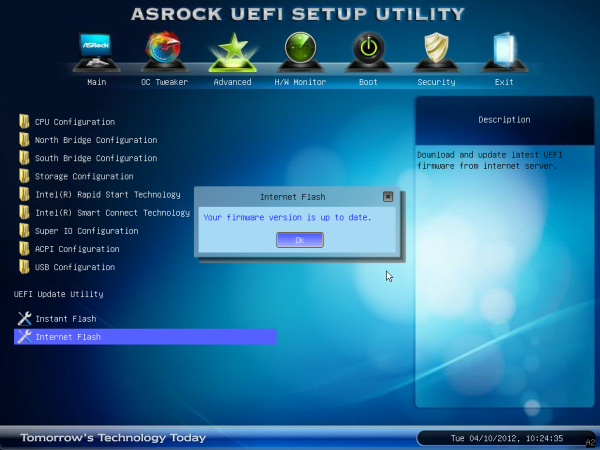






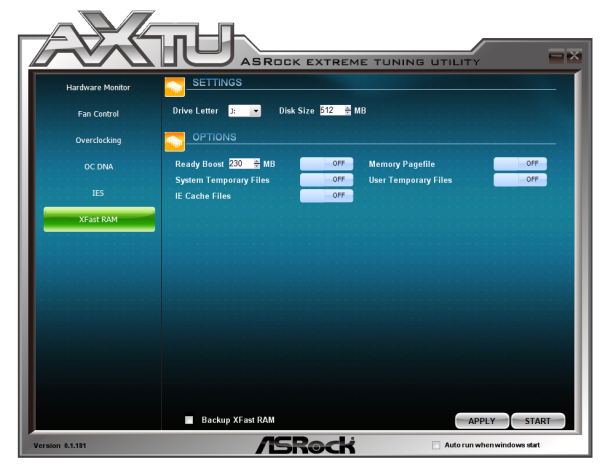














117 Comments
View All Comments
bojaka - Thursday, June 28, 2012 - link
Hi,On Gigabyte's homepage it says:
4 x 1.5V DDR3 DIMM sockets supporting up to 32 GB of system memory
regarding supported/recommended memory for this mainboard...
How come 1.65V memory is used and what are the (possible) consequences?
Should 1.5 or 1.65V memory be used?
Best regards // BoJaKa
Neoprimal - Tuesday, July 31, 2012 - link
Builders with more than a keyboard and mouse may have some issues with the UD3H. I recently got one because of some good reviews I read and the price/value of the board and I was on the cusp of exchanging it for something else because the board was just so unfriendly re: the VIA USB 3 ports.You need to populate the Intel ones before the VIA ones - not an issue. But the second you start populating the VIA ones you stand to get pretty frustrated. Each BIOS revision seems to fix the problem little by little (the saving grace thus far).
The board also doesn't seem to like Sandforce. I am hearing Everest 2 is giving some folks problems as well. After the long term, I had a Solid 3 that kept causing issues. Granted, most folks would say that this is because the Solid 3 is simply a 'crappy SSD', but it did work on other systems so crappy or not there's something to be said about the pairing of it and the UD3H.
The VIA audio didn't play well with my G930 headset. It would literally keep dropping out whenever I reboot and what this in turn did was set the G930 as default...that got annoying fast as I'd have to set the VIA back to default every, single, time. My fix was to unplug the USB key for the G930, a less than elegant response.
Before unscrewing and repackaging the board for return to Newegg since everyone was telling me it was defective, I decided to try one more thing (based on how well things seemed to work when my G19 was on the front USB 2 port); I purchased a USB 2 bracket (4 port) and attached it to the 2 USB headers I had left. I then plugged my 2 hubs (housing my printer, gamepad, flash drives, etc) on the USB 2 ports, put my G19 keyboard on a VIA USB 3 port (as these are the only ports that work 100% pre-boot) and put my 2 USB 3 hard drives on the Intel USB 3 ports where I pretty much leave them. This is the only way I have been able to run the board stable.
It was a lot to go through but things now work. If this were my first board I'd have been in trouble. Initially you don't experience the issues. It's when you move beyond a keyboard and mouse that you start seeing problems.
I wish reviewers did more than just stuck a keyboard and mouse on these boards. I get that the review process can be grueling but most people nowadays have more than a KB and Mouse and a review should put a board through more paces than just overclocking. These manufacturers put so much into 'tweaking' the boards for OCing they are getting lazy with the rest of stuff. It seems a lot of boards experience USB problems, despite the various chips they use.
I don't know if I'll ever use all of the onboard ports, I know that I don't DARE change anything, lest I go back to the reboots and crashes that occurred before I found my fix.
xs7v3n - Tuesday, August 7, 2012 - link
So i see almost everyone here is dealing with the slow post time.Most of the time my post time is around 8 seconds (sometimes its around 4 seconds), while Dr. Debug lcd on mobo is showing a "99" post then it loads up the windows 7 loading screen (but sometimes after the post a blank screen with that "_" [underscore] appearance like when u open cmd which takes like at least 8 seconds also).. I have a Corsair Force GT 240gb and i want to get the most speed out of this system on boot up.
xs7v3n - Tuesday, August 7, 2012 - link
Actually it wasn't 8sec it was more like 24seconds LOL and so sometimes its 8 seconds... Why is that taking that post so long to disappear?Raikku - Wednesday, September 5, 2012 - link
Why I don't have that auto-oc option in my Ext4's bios/oc-tweaker screen?Nanology - Monday, September 17, 2012 - link
Great review, it's cleared up a lot for me.It's been around 5yrs since I have updated my gaming rig.
I would like to be able to run a variety of games at med. settings and also stream games!
Also use a lot of Adobe products, video editing etc, and some 3d level design, but nothing to crazy!
Budget upgrade:
Intel i5-3570k
G.SKILL Ripjaws X Series 8GB DDR3 2133
Can't decide on one of these motherboards...
I currently have a CM Gemini II LGA 775 heat sink, which the ASRock board supports = saves money!
Do all these boards support a LGA 775 heat sink?
I was looking at the ASRock z77 pro4 for around $109, but really like the ASRock ex4
The 555 is nice and I would actually use it.
Can someone please help me sway my decision?!?!??!?!?!?
jonjonjonj - Saturday, November 17, 2012 - link
im seriously thinking about thie asrock extreme4 but the 2 PCI slots bother me. PCI-e came out in 2004. its 2012 time to ditch the PCI slots. if your getting a Z77 board and still use a PCI card its either time to upgrade that card or since you insist on using a 10 year old card stick with your old board.